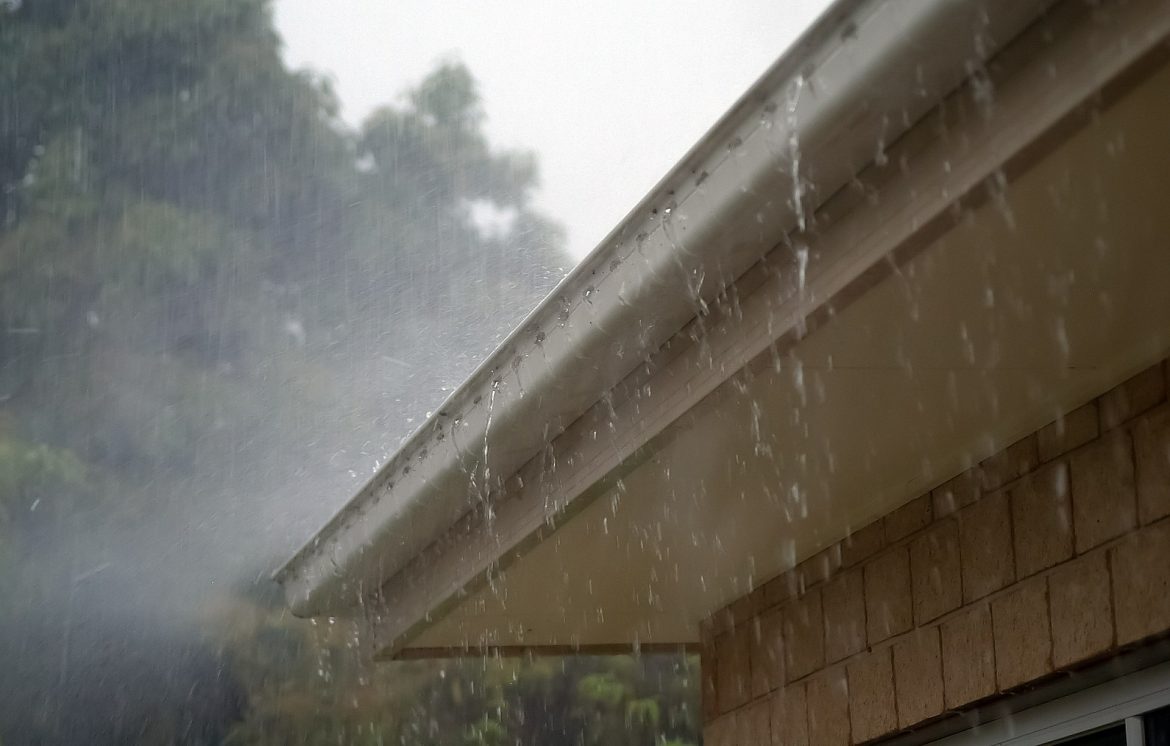Jak połączyć drenaż z rynny? Tworzymy system zabezpieczający mury i fundamenty budynku. Sprawne odprowadzenie wody opadowej przez rynny do zbiornika czy kanalizacji, skutecznie zabezpiecza dom i teren podwórka przed kałużami czy podmywaniem fundamentów. Jednym ze sposobów skutecznego odprowadzenia „deszczówki” jest połączenie rynny z drenażem. Jak połączyć oba systemy?
Gdzie odprowadzić wodę opadową spływającą przez rynny?
Dobry drenaż z rynny zamieszczony na domu czy budynku sprawnie odprowadza wodę opadową. Często jednak woda spływa rurami spustowymi bezpośrednio na podwórko lub w obrębie fundamentów budynku. Takie rozwiązanie podmywa fundamenty, schody i tworzy grząski grunt na posesji. Co zrobić, żeby woda z rynny nie zalewała działki?
Możemy zastosować drenaż liniowy lub punktowy. Zaletą rozwiązania punktowego jest to, że połączy rynnę bezpośrednio z drenażem wkopanym w ziemię. Rura drenarska odbierze wodę opadową z rynny i odprowadzi przez studzienkę do rowu melioracyjnego, zbiornika czy kanalizacji miejskiej.
Jak połączyć drenaż z rynny?
Drenaż z rynny można wykonać na dwa sposoby. Pierwszym z nich jest bezpośrednie połączenie rury spustowej z rurą drenarską. Do tego typu połączenia stosuje się czyszczak z sitkiem, złączkę drenarską, rurę drenarską bez otworów i studzienkę drenarską.
Alternatywą jest połączenie pośrednie rury spustowej z drenażem. W tym wypadku stosowany jest osadnik podrynnowy. Można również uzyskać dodatkowy efekt rozsączania wody dostarczanej do studzienki. Jak połączyć rynnę z drenażem na podstawie powyższych metod?
Bezpośrednie połączenie rynny i rury drenarskiej
Rurę spustową można połączyć bezpośrednio z rurą drenarską przez złączkę drenarską. Jednak 40-80 cm nad powierzchnią terenu warto umieścić rewizję. Czyszczak rewizja kanalizacyjna służy do inspekcji wewnętrznej kanalizacji. Czyszczak zatrzymuje liście, patyki, gałęzie, czyli wszystkie zanieczyszczenia spływające z wodą opadową. Dzięki rewizji można łatwo i bezproblemowo usunąć zanieczyszczenia. Czyszczak rewizja kanalizacyjna wykonany jest z polipropylenu – lekkiego tworzywa. Jest ono odporne na czynniki chemiczne, mechaniczne czy atmosferyczne. Dodatkowo jest lekki, dlatego nie obciąża konstrukcji dużą masą własną. Schemat wygląda tak, że podłączamy rurę spustową do czyszczaka, ten przez złączkę drenarską z rurą drenarską, a rurę ze studzienką drenarską.
Pośrednie połączenie rynny z drenażem przez zastosowanie osadnika rynnowego
Innym sposobem połączenia rury spustowej z drenażem jest pośrednie połączenie jej przez osadnik podrynnowy dolny lub boczny. Rura spustowa wprowadzona jest w osadnik podrynnowy od góry. Otwór wycinamy w dostępnym szablonie zgodnie ze średnicą rury spustowej. Można to zrobić ostrym nożykiem.
Osadnik wykonany jest z polipropylenu, czyli lekkiego tworzywa. Ze względu na to, że materiał jest odporny na różne czynniki mechaniczne czy pogodowe, można obłożyć go kostką brukową czy kamieniem. Nie tylko spełni swoje techniczne zadania, ale również ładnie wkomponuje się w nietuzinkową aranżację posadzki czy elewacji. Następnie, jeśli korzystamy z osadnika podrynnowego dolnego należy zastosować kolano kanalizacyjne zewnętrzne, które kielichem z uszczelką łączy się z osadnikiem . Na końcu można całość połączyć przez złączkę z rurą drenarską prowadzącą do studzienki. Ta następnie odprowadzi wodę do rur kanalizacyjnych, rowu czy zbiornika.
Zastosowanie rury drenarskiej z otworami – rozsączenie
Wodę opadową można rozsączyć po drodze ze studzienki. Jak wykonać takie rozsączenie? Zamiast rury drenarskiej pełnej (bez otworów) zastosować należy rurę drenarską z otworami. Układa się ją nie bliżej niż 1 metr od fundamentów. Dodatkowo należy rurę położyć w nieznacznym pochyle w kierunku studzienki. W innym wypadku woda zacznie podmywać grunt i bezpośrednio zacznie wpływać na fundamenty budynku. W takim wypadku stosujemy między kolanem a złączką drenarską odcinek rury kanalizacyjnej o długości 1 metra.
Bezpośredni lub pośredni drenaż z rynny pozwoli na bardzo skuteczne odprowadzanie wody opadowej. Dodatkowa rewizja pozwoli również skutecznie oczyszczać drenaż z liści czy patyków. W ten sposób można zabezpieczyć fundamenty domu i zapewnić stabilny grunt wokół niego.
